Remote Electrification for Sustainable Development in African Communities
Rebecca Wooding[1] and Jack Griffiths[2], School of Engineering, University of Warwick
Abstract
Poverty alleviation in developing nations is a global focus and constitutes one of the eight Millennium Development Goals (UN, 2012). In the era of a technology revolution, it is surprising that 1.3 billion people still live without electricity (IEA, 2011). The provision of electricity through off-grid hydro power in remote, rural communities may begin to bridge the gap between developed and developing. Even with enough power for lighting alone, local trading hours can be increased, education quality improved and health care enhanced. This project empowers communities by developing small scale hydro schemes constructed and operated by local people; providing basic commodities while building individual skills. The research, based in Western Uganda, is unique in that every aspect of the scheme is driven to be fully sustainable in a Ugandan community. Sustainability is assessed regarding technological design, but also the involvement and development of an often poorly educated, low skilled community.
Keywords: Off-grid, rural electrification, Uganda, developing world, engineering, hydro power
Introduction
An individual's inability to access electricity is one of the defining indicators of poverty within a country (Spreng et al, 2004). Electricity allows access to far superior education and the opportunity for industry and business to flourish. It has the ability to lift people, particularly women, from a subsistence lifestyle built around energy-intensive chores, prohibiting development and opportunities to increase quality of life, rather than simply sustaining it. The World Health Organisation estimates the typical time that women and children may spend collecting enough water to cook, bathe and wash within sub-Saharan Africa as three hours per day (WHO, 2005). With so much of the day spent on such basic, yet crucial, tasks, the opportunities for education or business development are heavily restricted, as such the cycle of poverty is self sustaining and difficult to escape.
In developing countries, where access to electricity is becoming more readily available in large cities, it is all too often the rural communities that are overlooked and ignored. In sub-Saharan Africa the overall urban and rural electrification rates are 57.5% and 11.9% respectively, with the rural electrification rate in countries such as Uganda, Malawi and the DRC being rated far lower, between two and three percent (IEA, 2010). Such developing countries tend to suffer from severe corruption and so with limited financial resources to begin with, and problems such as political unrest and lawlessness, the likelihood of grid-connected rural electrification is low (Bonnet, 2003). This serves to only increase the opportunity divide within countries and promote heavy urban migration, often resulting in the formation of slums; creating other issues such as overcrowding and poor sanitation practices (Ngindu et al, 2007).
Access to even a small amount of electricity can make a tremendous difference to the lives of a rural community (Dinkelman, 2010). From visiting communities in Uganda the Warwick team noted that a light bulb rated at ten watts of power will provide sufficient illumination for a typical household consisting of two rooms. This lighting has presumed benefits such as allowing children to study during the evenings and providing a better education. Low levels of electricity also dictate the standard of industry and business infrastructure, such as crude cinemas and mobile phone charging stations (ESDA, 2008).
In South East Asian countries such as Laos, Vietnam and Cambodia these problems have served to encourage innovative, low-level, community-driven solutions (BBC, 2004). "Mini-grids" comprising up to a few tens of households connected to basic hydro-electric generators have become so common that whole industries have built up around them. Chinese imported turbines, capable of producing up to 300 W (enough to serve several families), are available for less than $30 (Green, n.d) and an estimated 120,000 units have been installed so far. Such models for independent, rural electrification are highly appropriate for the many mountainous regions of sub-Saharan Africa, which experience a similar tropical climate and rainfall; an example being the rift valley in Western Uganda (World Climate, 2012). However, for a variety of reasons, as detailed later, such technology has not yet been adopted.
The issues obstructing the growth of these schemes cover a vast range of challenging problems. The Warwick team believes problems include the design of the turbine itself, the design of the necessary civil works, design of effective distribution systems, projects promoting community awareness and adoption of hydro power. Small-scale hydro-power initiatives build up a basic, local skill base, and fight the traditional attitude which is wary and often unresponsive to the benefits associated with new technologies (Smith, 2011).
The research element for this project was therefore twofold. While developing a scheme from locally sourced materials is vital, perhaps even more so is the community's willingness and ability to adopt responsibility for the overall management of the scheme. Thus, the purpose of this project was to understand the most effective methods in promoting community-driven, low-power hydro schemes in rural Uganda by constructing an entire system alongside the community. The findings would then be compared against two similar Warwick hydro projects from the previous years, each repetition optimising the last.
Literature Review
Literature surrounding small scale hydro technologies in sub-Saharan Africa
Nigel Smith and Phillip Maher, as part of a group from Nottingham University, examine the routes in which to provide off-grid electricity generation for rural Kenya (ESDA, 2008). With the intent of establishing the best methods of improving local manufacturing technologies and previous living standards, two separate pilot schemes were undertaken in the villages of Kathamba and Thima. The overarching aim of this research was to encourage the Kenyan Ministry of Energy to develop new legalisation, catering for a future ease in off-grid pico hydro installations.
In almost ten years since the first switch-on, it is reported that 90% of the children in the Thima village have extended their studying time, by two to three hours per night. In addition, village relationships have improved, with neighbours visiting those connected to a television or radio in the evening. Perhaps the most influential improvement for a low-income subsistence farmer in the Kathamba village is the 25% reduction in energy expenditure, owing to a 69% reduction in kerosene consumption; releasing finance for other areas. Education, inter-community relationships and monetary allocation improvements could lead to innovative business developments and thus a growth in the local economy, suggesting enhanced living standards, however, for this to be recorded more time is required.
Smith and Maher recognised that with such projects attention is often necessary where it would not initially appear obvious. Time spent educating the community regarding land rights, tariff payments issues, electricity standards or even governmental policies on renewable energy is crucial, and should be made central to any development project in a rural community.
Similar findings are echoed in Klunne's paper, offering a comparison of different micro-hydro schemes in Africa and a justification as to why only a few successful schemes exist (Klunne, 2010). This justification manifests itself simply in the lack of access to an established manufacturing industry, lack of local educational capacities and finally a lack of governmental budgetary allocations for small-scale, renewable technologies. Therefore Klunne defines that the solution maybe an embedded national program; representing a top-down approach. Governmental programs may provide support for local businesses, wishing to foster an emerging small scale, sustainable energy industry.
Literature surrounding sustainable project implementation in developing nations
Although hydro power is a well-established technology, many other technological solutions are available for rural electrification, yet most implementation strategies are consistent. Smith's research into the introduction of small scale bio-digesters gives a valid insight into the difficulties of technology adoption (Smith, 2011: 24-25). Akin to hydro power, bio-digester technology is not a new concept; however, research is necessary to develop a scheme affordable for a community with little or no disposal income, in a country limited by material resources.
Smith found that while the design and construction of a bio-digester meeting the needs of the low income target group was possible, the acceptance and continued use of the technology could prove problematic. In Smith's research the barrier between technology and culture is evident. Acceptance hindrances were embodied in practices relating to 'tradition, religion, culture and technology' (2011: 24); issues which were not expected prior to the completion of construction. A typical example of a developmental barrier was that the culture in Eastern Uganda is such that the more cows a farmer owns, the greater his 'wealth and social status' (2011: 24) is within the community. Due to 'zero grazing', the number of cows is defined by the amount of 'cow dung on (the farmer' s) compound' (2011: 24). Therefore, frequent removal of this manure into the bio-digester as a feedstock is unfavourable for the farmer' s perceived reputation. This is just one of many hindrances recognised by Smith's work. However, through examination, Smith advises that clear measures must be in place to allow for a 'demonstration of the financial return and payback' (2011: 25) for the farmer and the implications of using a bio-digester, such as stable electricity provision. It is suggested that this payback is related to cattle terms to generate the most significant reaction.
Method and Experience
A team of seven students[3] from the University of Warwick from mixed engineering disciplines were chosen to work for almost three months in Uganda, on a project capable of powering a medium-sized community of around 200 households. Three members of the 2011 team had already trained on a similar project the previous year and had consequently surveyed the local area for prospective sites. The site they found was Mabwe Trading Centre, a 40-minute car journey from Fort Portal, the nearest town. Mabwe was deemed particularly suitable due to its location of around 60 m from the Peripa river shown in 1.
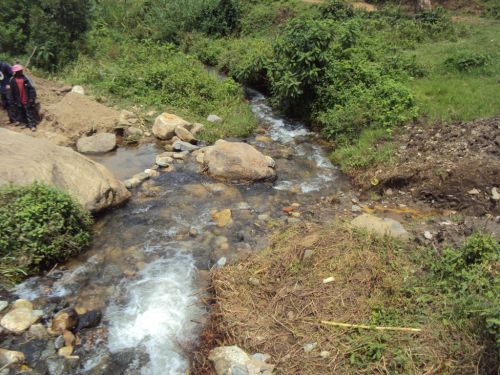
Figure 1: Peripa river at Mabwe (Warwick Team's own photograph)
The method applied to this research began with initially conducting a review of similar projects undertaken. The project was then shaped by conclusions drawn from analogous research, such as the Thima and Kathamba projects previously mentioned in Kenya, and incorporated with the team's ideology of non-charitable development. The desire to use as many available, naturally existing features as possible, such as boulders for pipe supports, meant that the majority of design work was completed on arrival in Uganda. Local availability dictated the bill of materials required for the project; consequently design decisions were often substantially restricted. A team of seven students, backed by Dr Oram and his Ugandan apprentice, meant construction work could be divided and supervised by individual members of the team, allowing for simultaneous engineering. This method proved vital to installing the scheme within the restricted time allocated; however, often bottlenecks developed, such as the need to build the channel before the penstock could be positioned.
The final stage of the methodology, connected to this research, is an assessment of the generating capability and the local adoption of the scheme. However, at the time of writing this article a full year had not passed and any data below this point does not reflect the outcome sufficiently. Therefore this article will focus on the initial stages and reflect upon the methods of implementation, rather than the final results.
Community Engagement
The implementation theory applied was that, in order to enable the community in Mabwe to develop a sense of empowerment and responsibility for the scheme, it was essential to eradicate any assumptions of charity and consequently ideas of dependence. A year before the project began, a Ugandan 'hydro committee' was elected, drawn from educated, respected and trustworthy members of the village. Each member was nominated and elected into the position by the Mabwe community, the only input from the Warwick team was the detailing of roles within the community which were as follows: Chairman, Secretary, Treasurer, Accountant, two Maintenance Workers, and members of the general committee.
It was then the role of the Warwick team to educate the committee, not only in the functioning of the hydro-scheme, but also in aspects such as book-keeping, banking, tariff-setting and safety. The committee dedicated many hours per day and chaired all the meetings between the community and Warwick team, proving to be an essential asset to the success of the project.
To further embed the sense of ownership, it was the Warwick team' s intention to ensure that the scheme implemented was affordable for the community, and therefore the community was asked to raise its own funds for all materials and tools, but were not expected to pay wages. Volunteer labour from the community was seen as essential to reduce costs, but also to establish engagement and develop local skills. Thus, the Warwick team maintained more of a supervisory role (2).
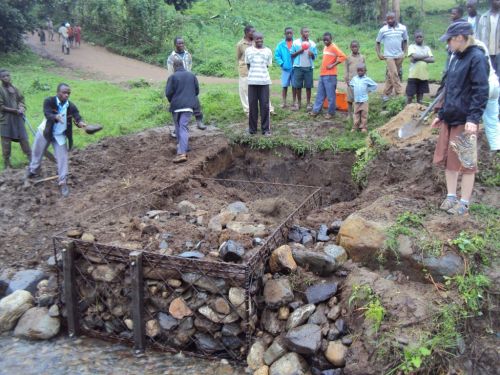
Figure 2: The Warwick team supervise the dam-building (Warwick Team's own photograph)
Wherever possible, locally sourced materials were used to support nearby economies and reduce transport costs. Local tools, such as a machete for cutting trees, were also favoured where attainable. The only essential tool supplied by the Warwick team was a welder, powered by a petrol-run generator. Although welding is a skill many Ugandans have, there was not a highly trained welder within close proximity and thus all of the welding was undertaken by a Ugandan from a nearby college, trained by Dr Colin Oram (3).
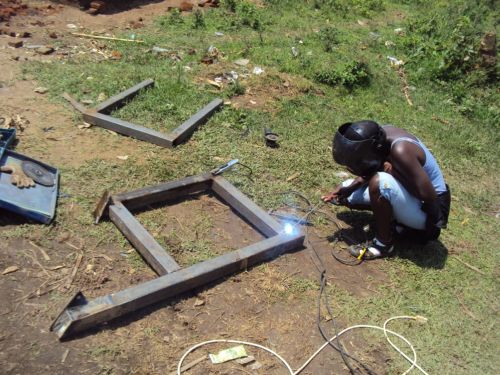
Figure 3: Ugandan welding part of the dam attachment (Warwick Team's own photograph)
Due to the nature of the project and the relatively large scale, Mabwe soon began to receive visits from politicians ranking to Cabinet level (4). Developments were broadcast on the local radio and neighbouring NGOs also showed an interest. The publicity gained from such a scheme is not uncommon. The aforementioned Nottingham University case studies describe methods leading to publicity enhancement such as organising a press release or erecting signs, with the hope that neighbouring villages become inspired (Smith, 2001). The positive feedback proved that such initiatives are desperately required in hundreds of communities, like Mabwe. Furthermore, the governmental support allows projects like this to continue with momentum. Here it is relevant to note that after many meetings, led by the hydro committee, the local government were so convinced by the project's intended effect that they agreed to fund all construction costs. The involvement of the government was again crucial to the success and ease of project implementation; hence it is vital that such relationships are maintained.
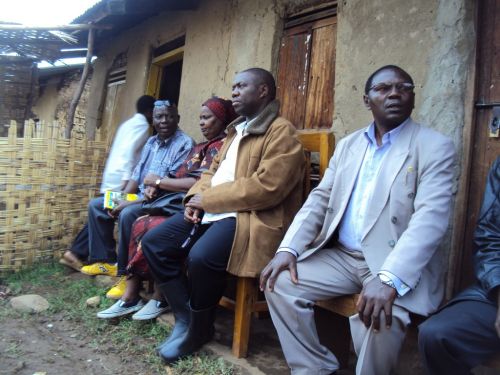
Figure 4: Local politicians visit the scheme (Warwick Team's own photograph)
The ultimate goal for this project was to develop an organisation run entirely by Ugandans, for Ugandans. During the summer of 2011 links were established with Ugandan universities such as Fort Portal's Mountains of the Moon and Kampala's Makerere University. These connections are vital to firstly reduce the likelihood of corruption within already operating schemes, but also allow for the universities to educate students using functioning, local case studies.
Design and Construction
The design focus was to ensure that the scheme was easily maintainable and flexible to changes in demand. Essentially, the initial scheme was to act as a first stepping stone which could be expanded as the community's electricity demand grew, alongside the intended economic growth. The original scheme was then designed to allow for a power output of no greater than 1 kW, enough for one hundred energy-saving light bulbs, rated at 10 W each, yet the site has the potential for at least four times this amount which could be exploited later.
The total infrastructure construction lasted nine weeks, during which the developments naturally divided into four main areas: constructing the dam, water channelling, building of the power house and arranging the transmission network.
A large proportion of this research was to develop design solutions to allow for local affordability and local manufacture wherever possible. This section serves to describe a few of the unique design decisions made with reference to their suitability and effectiveness.
Intake Dam
Dams are a crucial design component to all hydro schemes, regardless of size. In this project the dam specification was that materials must be sourced locally, components assembled onsite and the structure capable of withstanding varied river forces; whilst serving to convey a constant water volume to the turbine.
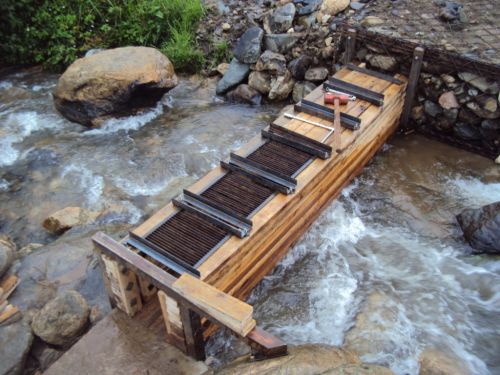
Figure 5: Completed dam (Warwick Team's own photograph)
Figure 5 shows the dam in its entirety. When this photo was taken the remainder of the scheme had not yet been completed and as such the water was diverted beneath the dam. When in operation the water level is raised sufficiently upstream to be collected through the metal grates, known as trash racks; the diverted flow then continues on through the channel to the turbine. A relevant design feature is firstly the use of wood, as a substitute for metal, for the main body of the dam. Wood is an inexpensive and readily available material around Mabwe. Although the quality of local wood is not always guaranteed, it is a light-weight solution and its swell in the water provides a waterproofing mechanism. Secondly, only half of the dam inlet is made from trash racks, with the other half from wooden blocks. Reducing the number of trash racks has many advantages such as a reduction in cost, constriction of the water volume entering the dam and a decrease in the time taken clearing the metal of collected debris. Finally, the dam supports to either side of the bank offer strength to the structure, in case of flooding or impact from any large force such as floating trees. The gabion (top right, 5) was welded together onsite from twisted steel bar, and filled with large rocks taken during the excavation of the bank. In time, this simple structure, designed by Dr Oram, will become hidden and further strengthened once new plants take root. However, the reason the team decided on this particular location for the dam was the availability of the large boulder, seen opposite the river of the gabion. Robust steel supports were welded together and drilled deep into the rock to attach the dam to the beginning of the channel.
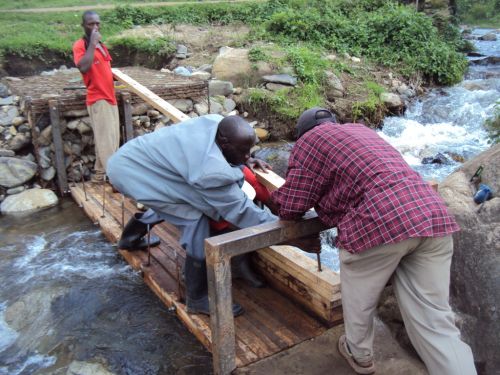
Figure 6: Locals constructing the dam (Warwick Team's own photograph)
The modular design of the dam, seen in 6, allows for ease of installation without the need for heavy machinery, which would otherwise cause a great expense and an unnecessary time delay to the construction phase.
Channel
Many large-scale schemes such as the Bujagali 250 MW hydro power plant in Eastern Uganda have a pipe arrangement, known as a penstock, to convey water from the dam to the turbine (Bujagali Energy, 2012). Yet using a pipe as a conduit is an expensive option and organising the delivery of such large quantities of pipe to a remote village would have been too time demanding. Therefore the decision was made to convey the water through an open channel for half of the distance from inlet to the turbine.
Once volume calculations were completed, work began on the build of the channel to connect the dam to the beginning of the pipe via a sedimentation tank (to remove sand from the water).
Extensive time was spent excavating the land for the channel due to high quantities of boulders, deeply rooted trees and the need to ensure the gradient was correct at 1:100. The quality of onsite cement-mixing was limited not only by lack of high-grade water, sand and clean aggregate, but also by the tools available. Setting of the cement also required periods without rain which were often not guaranteed. However, once the concrete slabs were set, the local builders were able to begin constructing the vertical walls (7), which would then be rendered for water proofing and supported by earth on the external faces. The builders employed to complete the brickwork were local, skilled workers and as such the village decided to offer a wage for their time. This decision was made by the hydro committee, without influence from the Warwick team and is a positive reflection on the community's willingness to take independent responsibility for the success of the hydro-scheme.
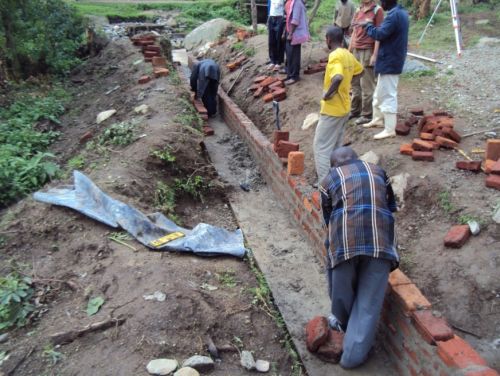
Figure 7: Local builders constructing channel (Warwick Team's own photograph)
Insulators
One of the most crucial safety factors in the design of the hydro scheme was the addition of insulators on the transmission poles to eliminate the possibility that electricity might travel down the pole to a human. The team developed a new design from materials available in the nearest town, Fort Portal. The developed insulator design can be locally manufactured at a cost of £1 per unit; the design incorporates a coach screw, steel washers, rubber tyre washers and thin PVC pipe. An image of the insulator ready to be screwed into the pole is shown in 8.

Figure 8: Appropriate insulator design (Warwick Team's own photograph)
The insulators can be driven directly into the transmission pole and such tasks are easily repeatable by the local community. 9 indicates how the power distribution lines were connected. Each length is cut individually to span the gap between two poles, these ends are then connected within a terminal block. This allows subsequent service drops to be easily wired and adds an element of versatility and adjustability to the scheme; catering for the intended economic growth.
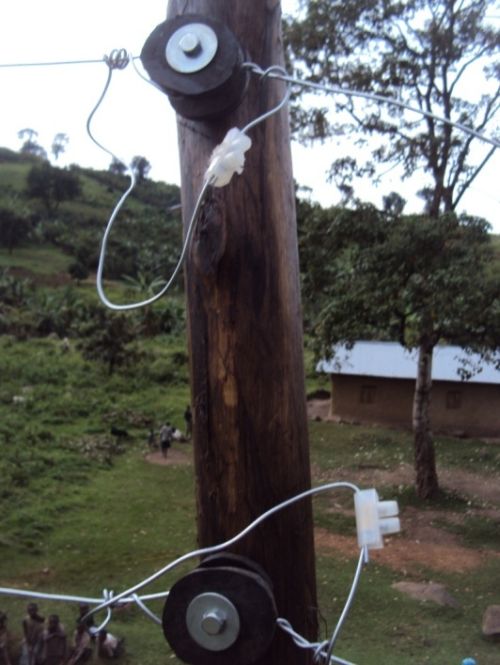
Figure 9: Wire connections (Warwick Team's own photograph)
Transmission Poles
All transmission poles were locally sourced trees, coated in oil for termite proofing. Positioning of the poles required constant communication with the community regarding land ownership and prospective building developments, but the committee successfully sourced all of the trees, dug the holes and prepared the poles. The two maintenance engineers were then trained on how to connect the poles and carry out any necessary wiring within the households. This is just one example of how whole-heartedly the project was embraced by the local community.
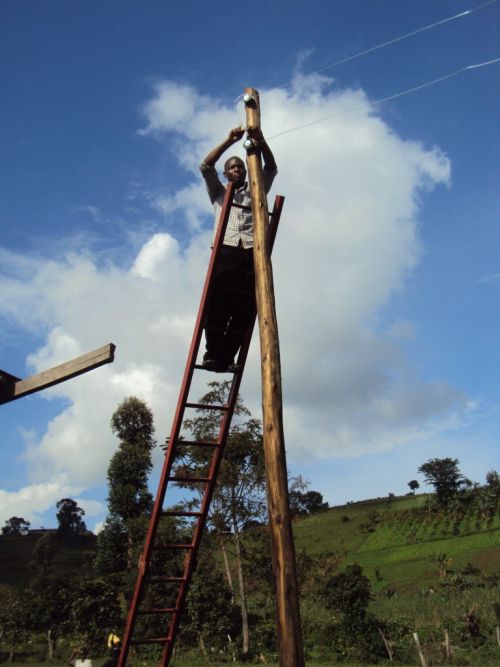
Figure 10: Local maintenance engineer wiring a transmission pole (Warwick Team's own photograph)
Conclusions and Lessons Learned
Assessment of the construction phase must be completed in two parts with regard to the tangible and intangible developments. The tangible aspects such as the physical installation of the scheme can be deemed a success. The management of the community and the Warwick team's ability to source materials effectively, supported by the hydro committee, meant the construction phase was completed on schedule and within budget. Requesting volunteer labour from the community meant that a daily workforce was not guaranteed and often dependent on varied religious practices, consequently disrupting the pace of progress. However, a strong Ugandan-led hydro committee made completion of the project possible, in that they were able to constantly re-engage and motivate the local workforce, often enticing the workers with free lunches prepared by the women. A secondary, unforeseen delay to progress was the weather. To minimise costs and maximise use of local skill the design included a large amount of concrete; however, to set each slab required lengthy periods without rain, which was often not certain. A solution to cast the concrete regardless of the weather would be to set up a marquee, yet this would require an employed night-watchman, as good-quality tarpaulin is relatively expensive and prone to theft.
The accomplishment of the intangible implications is somewhat harder to assess. Educating the members of the hydro committee regarding their respective roles was a time-demanding process. Language barriers and limited formal education restricted the flow of information at times. Moreover, while committee members did not have formal nine-to-five employment, their subsistence farming required daily time investment. The nature of the project was such that during the six to nine weeks of construction, absolute involvement of the hydro committee, in particular Chairman and Secretary, was crucial. Without the constant involvement of the hydro committee the scheme would not be able to operate independent of the UK-based engineers. However, daily volunteer labour from the committee could have resulted in loss of income for their respective families and therefore a compromise was vital. Although it was not practised, it may be suggested that each committee member, depending on the demands of their role, receive a small monetary compensation. Yet, once wages are introduced, it is often difficult to distinguish between honest intentions for the good of the community or self benefit. From assessing the outcome of this project it was clear that wages for the hydro committee can only be advised, not enforced, by the Warwick team. It is ultimately the decision of community to settle on an appropriate solution on a village-by-village basis.
The final success of the 2011 project is yet to be assessed and can only be recognised after a few years of operation, to allow the community to adopt the technology fully. However, the impact of small hydro schemes led by Warwick projects in Uganda is already obvious. In 2010 a 300 W hydro turbine was installed in a very isolated primary school. During the first year of operation the head teacher produced a chart displaying a positive correlation between periods when the turbine was fully functioning and higher exam results. There are many reasons for this interesting pattern. Firstly, during the rainy season, with the shutters closed, it was often too dark for students to read or write; however, with the newly installed lighting it was possible to continue teaching. Secondly, as a consequence of its remote location, many teachers lived on the school grounds. The electrification of the staff quarters extended the hours available for a teacher to mark work or prepare lessons; adding comfort while also improving their living quality and general happiness. This case study proves the impressive impacts generated from just a small amount of electricity in otherwise deprived areas.
The success of the Warwick hydro project, now in its fourth year, has been recognised by many bodies both internal and external to the University of Warwick. Each year capable and versatile students work directly with the Ugandan communities, creating bidirectional, beneficial relationships. Continuity of this work is vital to develop not only effective, robust solutions for rural electrification, but to instigate educational and economic growth in deprived communities, which with time will be able to implement similar schemes independently away from western support.
The 2012 team of Warwick engineering undergraduates will be visiting all three of the past projects and working with the communities and optimising each scheme. For more information or photos and videos of previous schemes please visit www.rwenzorihydro.com.
Acknowledgments
Dr Colin Oram from the University of Warwick's School of Engineering has been more than vital to the organisation and developments of these projects. Without his efforts and extended time such projects would simply not be possible and it is his daily continued interest in all the students and Uganda community members which at as a safety net to the future of Warwick hydro in Uganda.
Professor Terry Thomas has also dedicated the majority of his life to engineering developments in developing nations. His wealth of knowledge and support has been much appreciated by all the students undertaking these research projects.
The 2011 team would also like to say thank you to the following sponsors for their support and interest in the projects: the Undergraduate Research Scholarship Scheme, the Institute for Advanced Teaching and Learning, the University of Warwick's School of Engineering and IBM.
Thanks to Jack Griffiths for minor edits and structuring of the paper.
List of Figures
Figure 1: Peripa river at Mabwe
Figure 2: The Warwick team supervise the dam building
Figure 3: Ugandan welding part of the dam attachment
Figure 4: Local politicians visit the scheme
Figure 5: Completed dam
Figure 6: Locals constructing the dam
Figure 7: Local builders constructing channel
Figure 8: Appropriate insulator design
Figure 9: Wire connections
Figure 10: Local Maintenance Engineer wiring a transmission pole
All photos are the team's own.
Notes
[1] Rebecca Wooding has just graduated and will be starting work this summer for Mott MacDonald in London as a Graduate Sustainability Master Planning Engineer.
[2] Jack Griffiths is currently working for UBS as a Summer Intern. In September he will finish and take a year out traveling. In September 2013 he will begin a graduate scheme working for BP.
[3] Ethan Fowler, Jack Griffiths, Emily Huynh, Rajiv Dhutia, Daniel Chauhan, Paul Mills and Rebecca Wooding.
References
BBC (2004), Getting the Most out of Water, available at http://news.bbc.co.uk/go/pr/fr/-/1/hi/sci/tech/4048719.stm, accessed 01 July 2011
Bonnet, R. A. (2003), The Comparative Politics of Corruption: Accounting for the East Asian Paradox in Corruption, Growth and Investment, USA: Elsevier
Bujagali Energy (2012), Project Overview, available at http://www.bujagali-energy.com/bujagali_projectOverview1.htm, accessed 10 July 2012
Dinkelman, T. (2010), The Effect of Rural Electrification for Employment: New Evidence from South Africa, Princeton: Princeton University
ESDA (Energy for Sustainable Development in Africa) (2008), Best Practices in Rural Electrification using Renewable Energy in Africa, available at http://ftpnrj.free.fr/proven/f_delivrables/4_5_Case_study_reports/KenyaThimaKathamba.pdf, accessed 10 July 2012
Green, D. J. (n.d). The Pico Hydro Market in Vietnam, Hampshire: IT Power
IEA (2011), Energy for All: Financing Access for the Poor, Paris: International Energy Agency
IEA (2010), World Energy Outlook, Key Graphs, Paris: International Energy Agency
Klunne, W. J. (2010), Sustainable Implementation of Microhydro to Eradicate Poverty in Africa, South Africa: Council for Scientific and Industrial Research.
Ngindu, A.M and Kimani‐Murage, E. W. (2007), 'Quality of Water the Slum Dwellers Use: The Case of a Kenyan Slum', Journal of Urban Health, 84 (6) 829-38
Smith, P. M. (2001, May Edition 2.0), Pico Hydro for Village Power: A Pratical Manual for Schemes up to 5 kW in Hilly Areas, available at http://www.eee.nottingham.ac.uk/picohydro/docs/impman(ch1-6).pdf, accessed 18 July 2012
Smith, D. J. (2011), The Potential of Small-Scale Biogas Digesters to Alleviate Poverty and Improve Long Term Sustainability of Ecosystem Services in Sub-Saharan Africa, Aberdeen: DFID
Spreng, D. T and Pachauri, S. (2004), 'Energy Use and Energy Access in Relation to Poverty', Economic and Political Weekly, 39 (3), 271-78
World Climate (2012), Climate Data for 0°N 30°E and Climate Data for 31°N 121°E, http://www.worldclimate.com/cgi-bin/grid.pl?gr=N00E030 and http://www.worldclimate.com/cgi-bin/grid.pl?gr=N31E121, accessed 18 July 2012
UN (2012), Millennium Development Goals Report 2012, Geneva: United Nations World Climate (2012), Climate Data for 0°N 30°E and Climate Data for 31°N 121°E, available at http://www.worldclimate.com/cgi-bin/grid.pl?gr=N00E030 and http://www.worldclimate.com/cgi-bin/grid.pl?gr=N31E121, accessed 18 July 2012
To cite this paper please use the following details: Wooding, R. and Griffiths, J. (2012), 'Remote Electrification for Sustainable Development in African Communities', Reinvention: a Journal of Undergraduate Research, British Conference of Undergraduate Research 2012 Special Issue, www.warwick.ac.uk/go/reinventionjournal/issues/bcur2012specialissue/wooding. Date accessed [insert date]. If you cite this article or use it in any teaching or other related activities please let us know by e-mailing us at Reinventionjournal@warwick.ac.uk.
Spoken Presentation at BCUR